Table of contents:
AR/VR for Shopping: Market Overview
What is the Customer Journey in Shopping?
AR/VR for Marketing and Pre-Sale
App’s Architecture and Tech Stack
The whole world is going digital, and more and more people now prefer online shopping and virtual stores to the exhausting process of wandering through store aisles. Retailers need to keep up with this massive change in consumer behavior to sell more consumer goods.
This is where advanced technology comes in: Augmented Reality and Virtual Reality in retail are at peak popularity as a new stage of customer service, and in this article, we’ll look into why.
AR/VR for Shopping: Market Overview
What is the Customer Journey in Shopping?
AR/VR for Marketing and Pre-Sale
App’s Architecture and Tech Stack
There can be many options for applying AR/VR to retail, but in this article we’ll focus on how to enhance customer experience and brand-client relationship with top-notch technologies.
Statistics reveal how popular AR/VR is for retail and shopping.
The numbers say that about 5% of the global AR/VR and mixed reality market will be in the retail sector by 2022. In 2021, 71% of consumers say they would shop more often if retailers used AR. AR apps give shoppers the ability to try on clothes virtually or see how furniture will look in their apartment without actually buying any products.
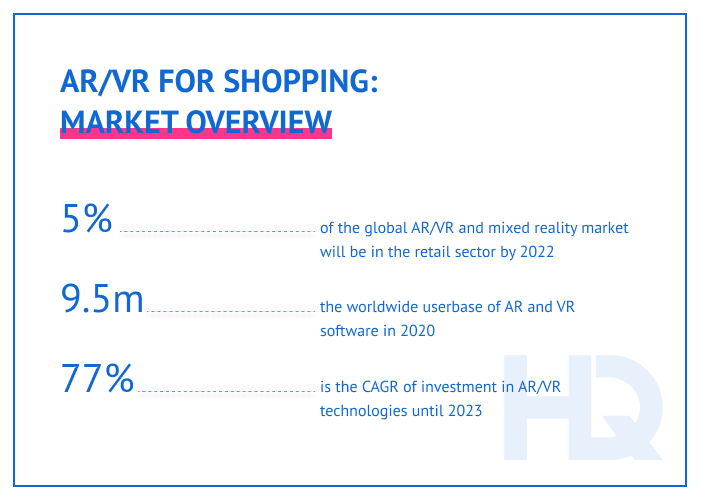
The user base for AR and VR software for retail in 2020 was around 9.5 million people worldwide. This number is expected to grow up to 31.5 million.
Investment in AR/VR technologies is growing. For example, in 2020 some $18.8 billion was spent on AR/VR, and the compound annual growth rate is expected to reach 77% by 2023.
Isn’t that impressive?
Now let’s discuss how exactly retailers use AR/VR for customer experience improvement. We’ll start from basics: what is the “customer journey” and why are all apps built around it?
How do modern businesses use AR to increase their revenues and outperform their industry competitors?
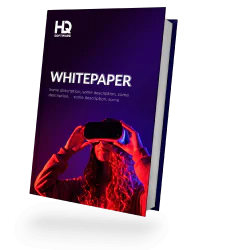
Whenever a customer purchases a particular product from grocery to vehicle or service, the process becomes what is referred to as the customer journey.
It consists of 5 vital stages that the customer, ideally, is guided through by the seller:
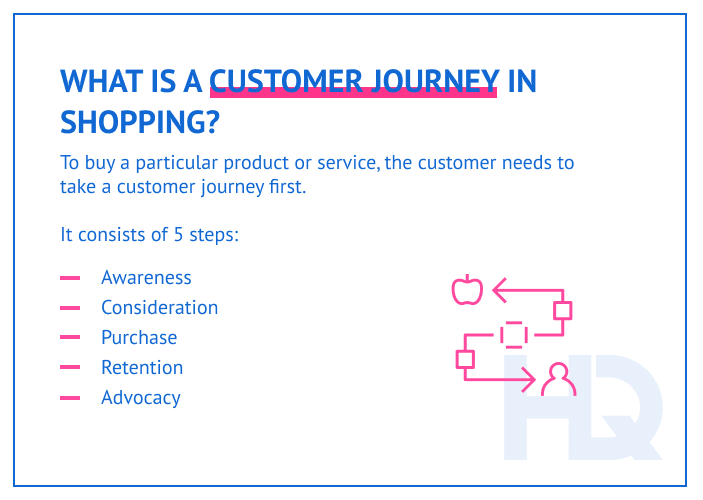
These steps are part of the customer onboarding process, which helps customers choose, evaluate, and purchase products or services with ongoing support.
If carried out well, this has positive effects for the retailer:
The 5 steps of the customer journey can be divided into three categories of business activity:
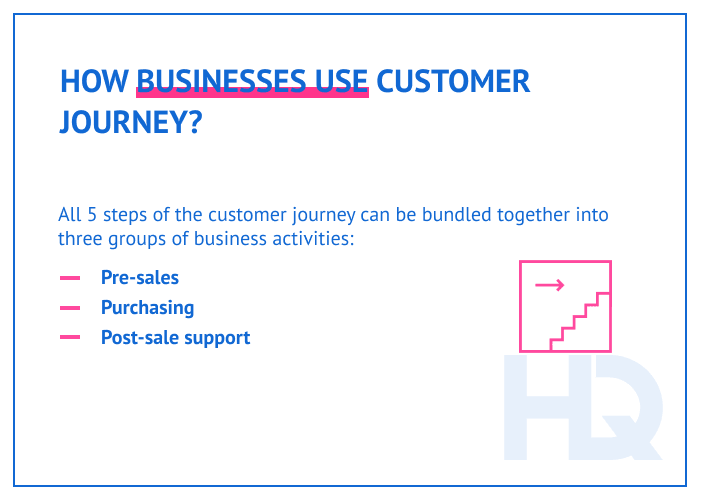
We will review all three and determine how AR/VR can help businesses in each step.
Pre-sales includes the first two stages of the customer journey: awareness and consideration. During these steps, the retailer has the opportunity to build a strong brand image and leave a positive impression.
With AR/VR solutions, retailers can remove uncertainties and provide more information about their products in a more enjoyable and interactive way. Let’s discuss them in detail.
AR/VR solutions for retail – custom development at your service
HQSoftware has a team of skilled professionals ready to tackle the project. Let’s talk!
Anna Halias
Business Development Manager,
HQSoftware
Customers typically have a hard time deciding whether to buy a particular item of furniture or home décor because it’s difficult to imagine how exactly they will look in their homes.
This explains why online furniture stores still aren’t so popular; customers still prefer to visit brick-and-mortar stores to see real products and visualize them in the room they are buying for.
AR/VR helps eliminate grey areas and lets customers make informed buying decisions.
With immersive solutions, customers can place the furniture item or any other object in a picture of a room and see whether it complements the home. AR apps are capable of showing full-scale, life-like models of furniture so that customers don’t even need to visit stores in person.
See how Ikea Place did this:
One of the strongest drivers for sales is trends and fashion. The more people buy particular products and show appreciation for a brand, the more new customers it attracts.
This is where markerless AR comes in handy. With this technology, brands and retailers can develop mobile apps that will scan products and show particular information about them that will help customers make a buying decision.
For example, Brazilian retailer C&A augmented its hangers. The hangers show how many likes the product got on Facebook. Upon pointing the camera at the hanger, the user sees a “Look online” button in Augmented Reality and can get more information on the product — for example, whether any of the user’s friends liked the item. They can even see how a virtual model rocks the look.
This AR solution helps the customer consider fashion trends or simply learn whether the product is popular among their friends and make a more data-wise buying decision.
This stage speaks for itself — when the customer is ready to make a buying decision they move to the Purchase stage of the customer journey. Here is what businesses can do to motivate customers to buy their products or services.
Augmented Reality retail apps can help customers choose new looks and eliminate the guesswork. Want to know how a new hairstyle will look on you? Want to try a new makeup before an important event? Just use AR/VR solutions.
For example, Sephora offers an app that lets customers try a range of makeup before buying the product. The app utilizes a smartphone camera to recognize the shape and features of the customer’s face and overlay beauty products precisely.
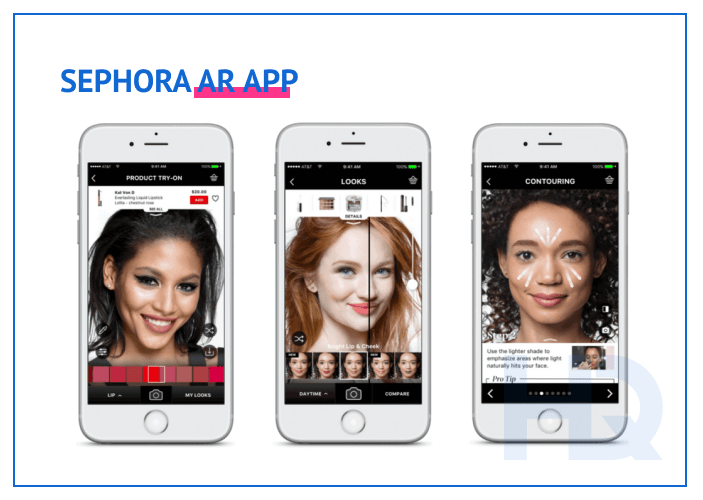
With such apps, customers can color-match foundations and other products, choosing from a number of brands and colors without even visiting a store. After that, all they have to do is buy the right products and enjoy their perfect match.
As for clothes and shoes, there are also apps that allow for trying on numerous outfits in a minute — Augmented Reality virtual dressing rooms, or the same applications built with VR.
For example, major retailers like Macy’s and Adidas put so-called magic mirror devices in their stores so that customers can try on items virtually via augmented fitting rooms.

Other apps are just installed on the smartphone and either create a 3D model out of the user’s photos to virtually put clothes on it, or overlay clothes in real-time when the smartphone’s camera is pointed at the user.
This reduces time spent looking for matching outfits and helps customers pick and purchase products easier and with less hesitation. Also, virtual dressing rooms seem to reduce product returns; after Macy’s introduced VR try-before-you-buy tools, the return rate dropped to 2% and lower.
Traditional retail experiences are limited by available information tools, including in-store ads, printed copy, and similar materials.
But AR/VR solutions can elevate the retail experience game.
For example, while waiting for a drink in Starbucks, customers can scan AR markers to unlock fun visual experiences, read more about products, or even study the coffee roasting process. All done in a single Augmented Reality retail app!
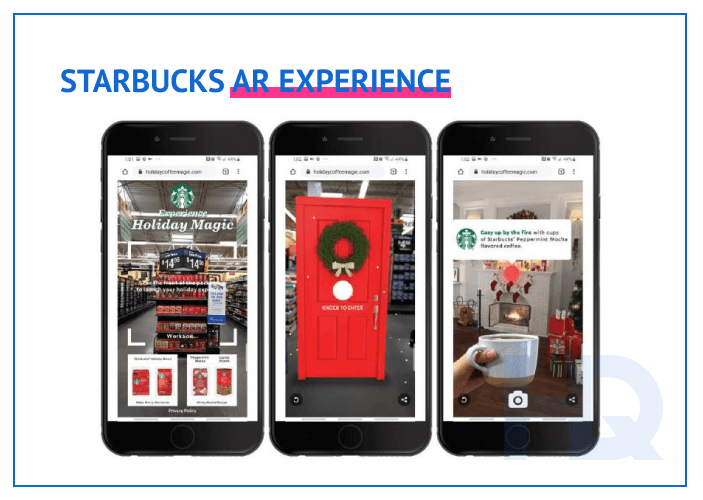
Such details greatly enhance the customer experience and increase the chances that the customer will return.
Post-sale support includes relationships with clients who are in the Retention and Advocacy stages of the customer journey. Here are some options AR/VR solutions provide:
Sometimes customers experience particular issues using the product. Often they try to resolve them by themselves, which suggests that businesses should provide customers with self-service support.
Issues that are easy to solve on-site are usually described in a business’s FAQ. This can be enhanced a great deal by introducing AR and creating immersive manuals and training, so that the user can see and know exactly what they have to do.
Will your customers save that bulky paper user manual after unpacking the product and using it? Quite possibly not. But these relics can be efficiently replaced by Augmented Reality retail apps.
For example, Mercedes Benz is an early adopter of AR manuals. The AR app allows new car owners how to understand every element of the car’s dashboard, using a smartphone or a tablet. The manual also includes some basic guides on how to do simple car repairs, check the oil, and so on.
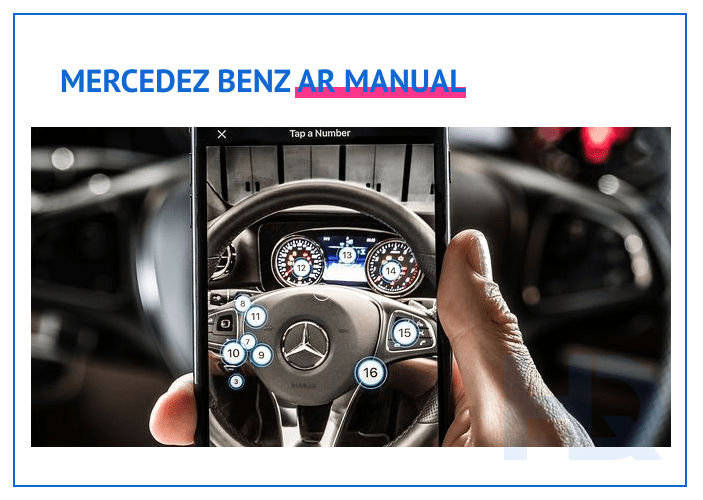
Such AR solutions dramatically increase customer satisfaction and encourage buyers to spread the word about your products and services. AR also improves the B2B customer journey as a pre-sale and support tool.
To build an app for any of these purposes, businesses first need to learn the tech stack and application architecture of AR/VR solutions. Let’s get to it.
We’ll review AR and VR apps separately, since these have many differences.
AR apps typically have 3 components:
A typical AR app architecture could look like this:
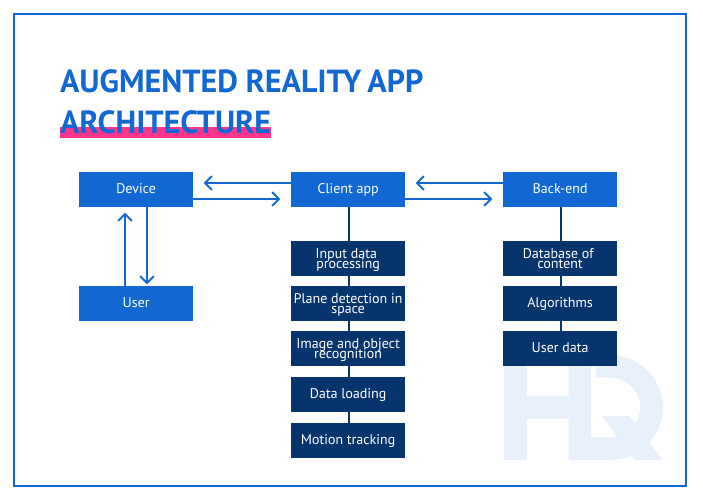
The technical stack for an AR application may differ from app to app, depending on the hardware it runs on, software platform, industry requirements, and so on. So, we will describe a complete stack for AR apps:
| Development frameworks / SDK | Unity, Vuforia SDK, OpenGL, SceneKit, Wikitude SDK, ARToolKit, Catchoom SDK, Kudan SDK, EasyAR SDK, iOS/Android SDK, ARKit, ARCore, 8th Wall, AR.js |
|---|---|
| Platforms | Android, iOS, Windows, macOS |
| Hardware | AR-kiosks: point-of-sale devices, AR installations, magic mirrors, etc. |
| Glasses | Microsoft HoloLens, Oculus Quest, Epson Moverio, Google Glass, Vuzix Blade, etc. |
When it comes to VR apps, these have 3 common components as well:
See the visualization of all components here:
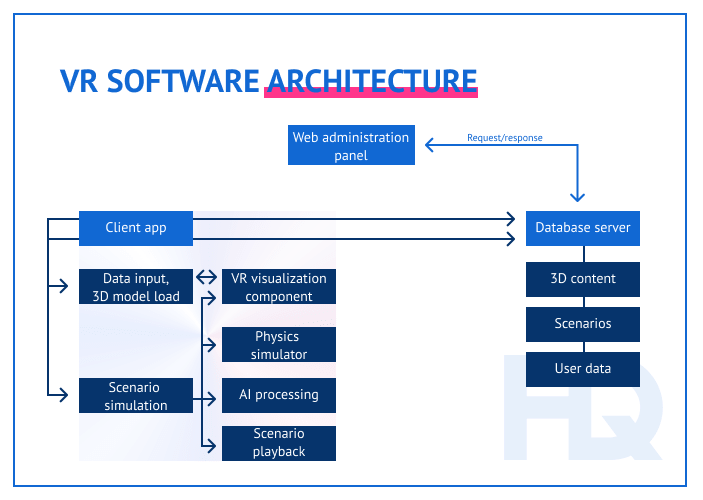
Here’s a complete tech stack for VR apps:
| Languages | C++, C#, HTML, CSS, JS, Python, Go, Microsoft .NET |
|---|---|
| Cloud technologies | Amazon Web Services, Microsoft Azure, Google Cloud |
| Development frameworks / SDK | Unity, Unreal Engine, Oculus SDK, GearVR SDK, iOS/Android SDK, WebVR, React VR, Google VR |
| Hardware | Samsung Gear VR, Oculus Rift, HTC Vive, Google Cardboard / Daydream, PlayStation VR, treadmills, haptic gloves |
Technologies used, included features, and the overall complexity of the app architecture all have a great impact on the app’s final price. Let’s see how much it costs to add AR or VR to your retail system.
For any application, several factors affect development cost:
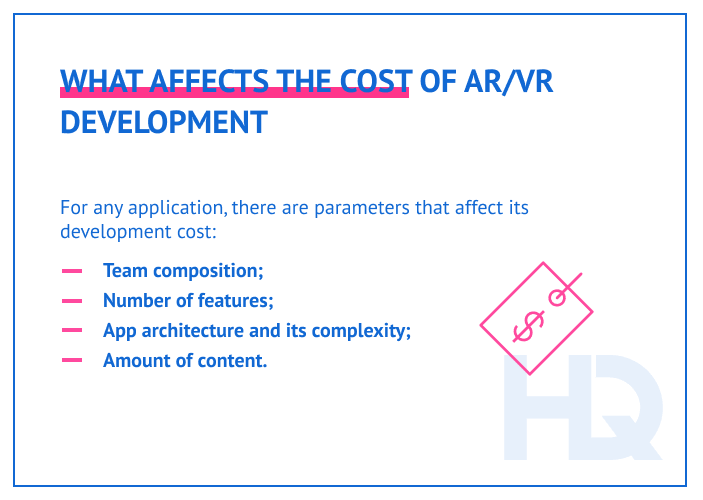
To make the calculation easier, we’ll take an average hourly developer rate of $35 — this is an average rate for developers from leading European IT companies like Estonia.
To build a complex AR app with, for example, several markers, social media sharing features, a content gallery, and a few extra features, it will take around 160 hours of development or more. Here we also need to add around 100 hours of business analysis, project management, 3D design, testing and quality assurance.
As a result, building such an app for retail businesses will cost around $46,000.
A VR application that demands a similar set of developers to build a well-thought-out retail experience, with content reviewed or created by a retail professional, will cost around $30,000.
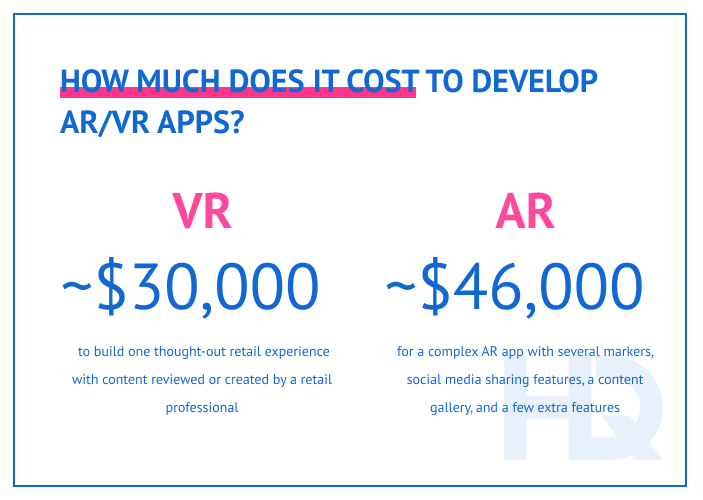
We have mastered all aspects of AR/VR solutions development and have a strong collection of successful projects under our belt.
Here are just some of them.
This platform is an easy-to-master AR solution that allows for building AR experiences. This platform is available to any user, even those who have no previous technical experience.
In this application, users can:
As a result, developers at HQSoftware have created a scalable and technology-agnostic platform with powerful marketing tools and advanced interoperability of all parts of the system: back-end, front-end, iOS and Android mobile apps, and third-party components.
This application is a must-have for all retailers that want to go digital — a virtual fitting room.
This application allows any user with a smartphone or a tablet to take a set of photos of their body so that the PICTOFiT app can create a 3D model of this person. Then, the user can try clothes on this model virtually to see whether they fit.
Such applications reinvent e-commerce and give retailers an advanced tool to customize the shopping experience, lower return rates, increase customer loyalty, and even boost brand awareness.
We are open to seeing your business needs and determining the best solution. Complete this form, and receive a free personalized proposal from your dedicated manager.

Sergei Vardomatski
Founder